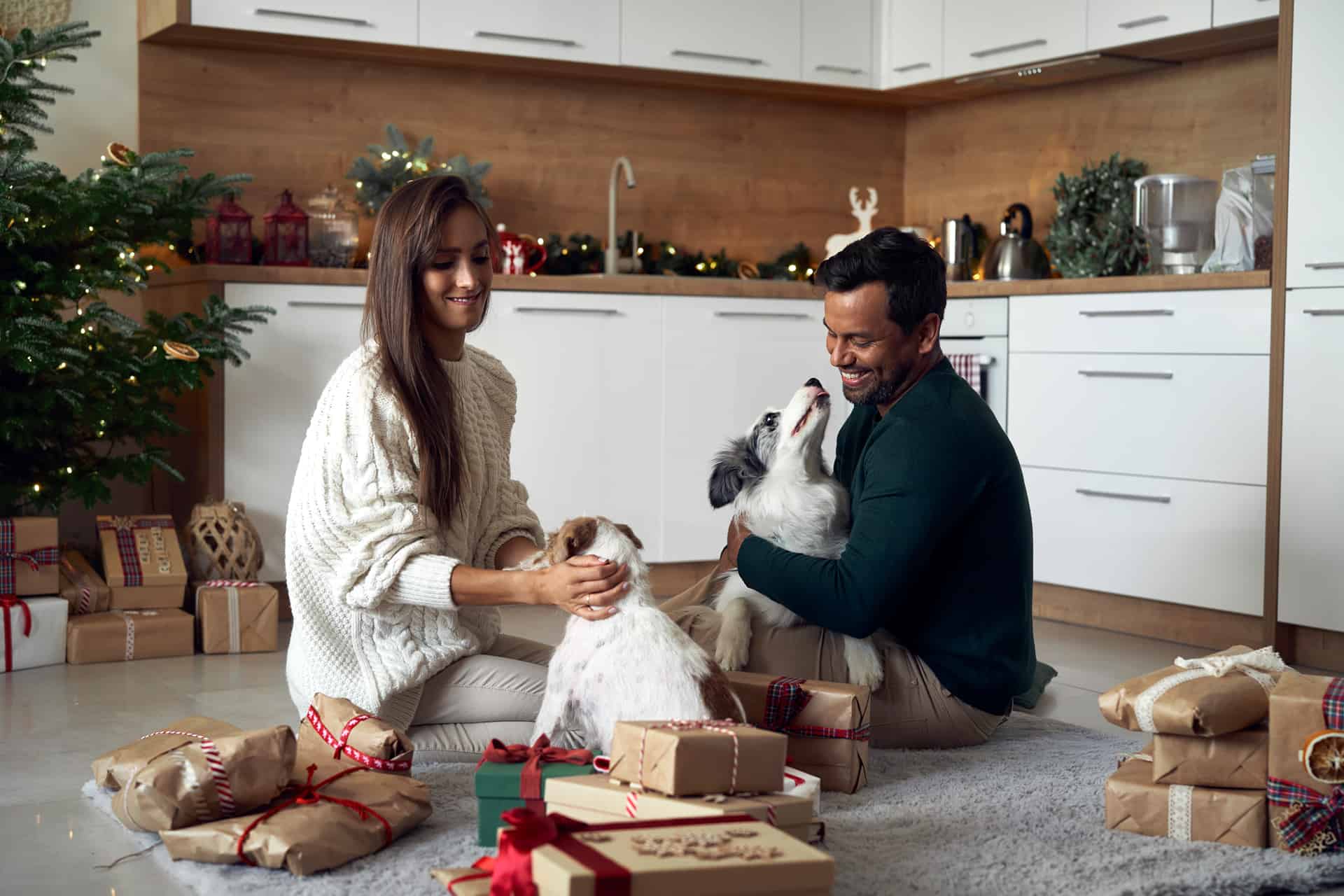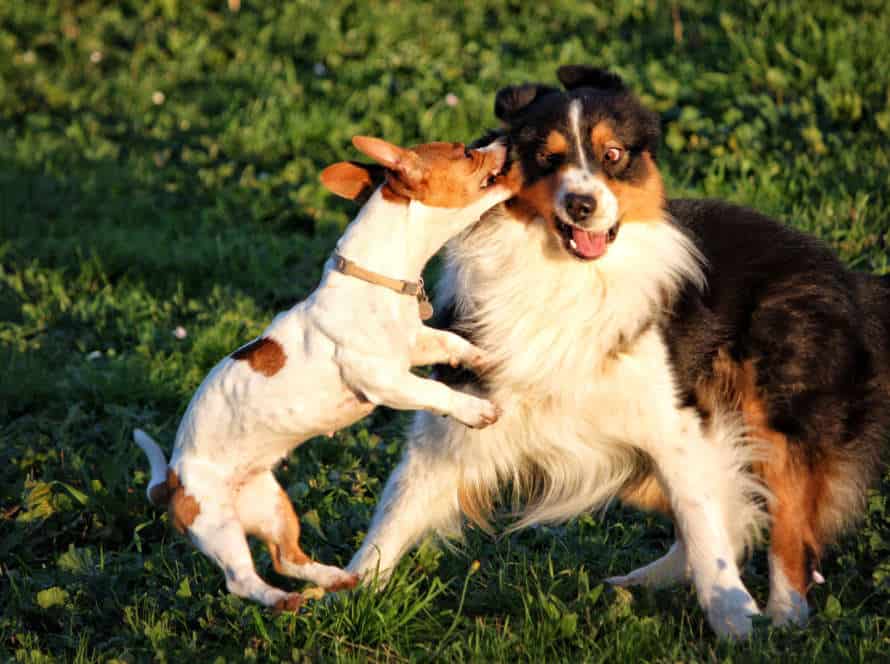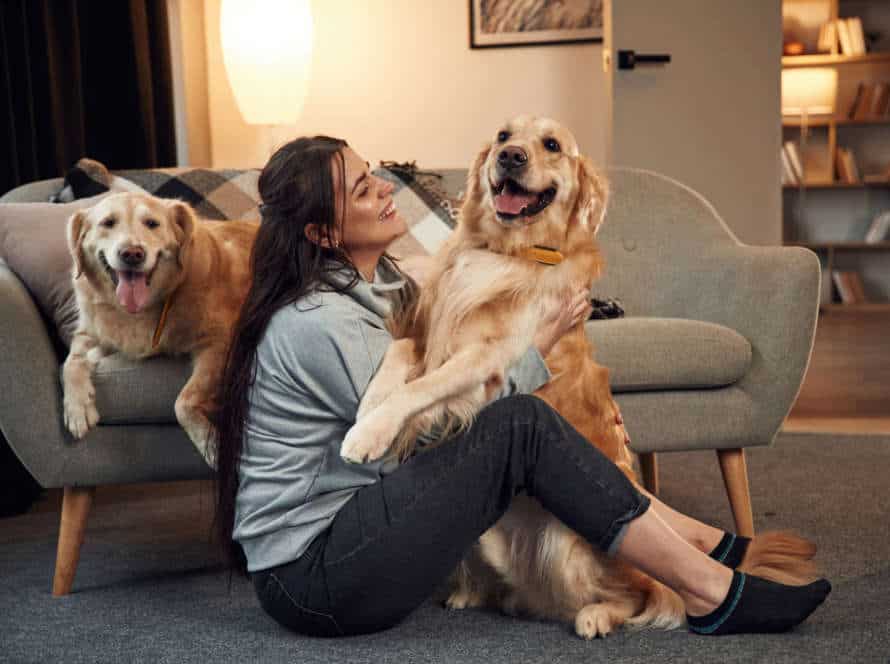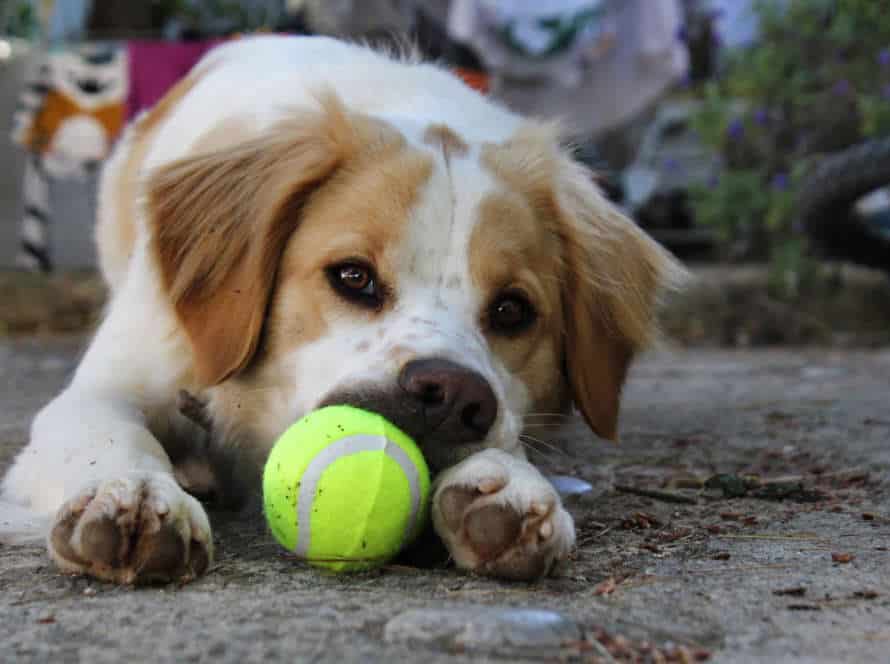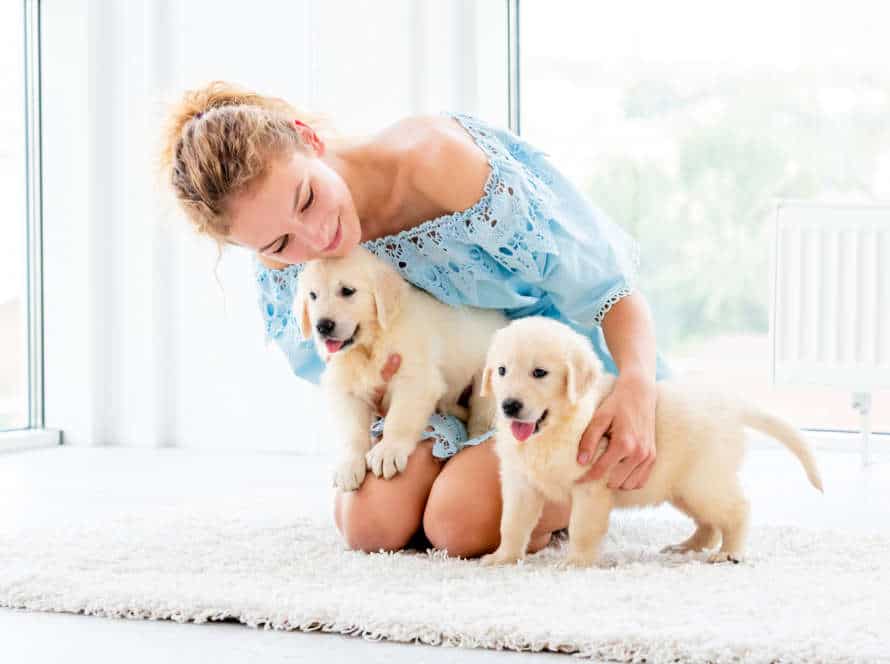Bringing Home a New Dog: A Guide to Successful Introductions
Bringing a pup to your home can be daunting for the pup and the existing pets. Here’s a guide to make it go easily:
- Preparing for the pup’s arrival. Clear the mess and have a special spot for the pup. Make sure other pets have their own spot too.
- Introducing them on a leash. Give the pup and your existing pets an introduction in a place that is not your house, like a park.
- Supervise their interactions. Do not leave them together during first meetings. Reward good behavior and steer bad behavior away.
- Gradual integration. Allow them to spend more time together, off-leash, but with supervision. Remove items from the environment that may cause tension or aggression, like toys.
It’s important to know that the introduction time varies from pet to pet, so be patient and never rush.
Preparing for a new dog
A new pup in the family? Exciting and nerve-racking! Before introducing them, take essential steps. Prep your home. Get the right toys and supplies. Introduce existing pets. These steps make a successful transition. Let’s learn more to help your new dog flourish in their home.
Assessing your family’s lifestyle and needs
Bringing home a pup? Consider these things first!
Time: Dogs need attention, exercise, grooming, and socializing. If your family has a hectic life, go for a low-maintenance breed or an older pup.
Space: Dogs need room to move around and play. Consider if your living space can handle larger breeds.
Allergies: Some breeds can cause allergies. Go for hypoallergenic breeds or speak to an allergist.
Children: Research what breeds are best for kids, and teach them how to interact with dogs safely.
Pro Tip: Take the time to research breeds, talk to breeders, and foster or volunteer at a shelter to gain hands-on experience before adoption.
Choosing the right breed and age
When getting a new pup, selecting the right breed and age is key. Think about the following:
- Breed: Each kind has its own traits, like how active it is, grooming needs, and character. Research breeds to see which is ideal for your life and living area.
- Age: Adopt a pup one year or older. Puppies need lots of attention and teaching, making it tough for first-time pet owners. An older dog may be less needy and may have some training.
- Temperament: Look at the pup’s personality. If you have kids or other animals, you’ll need one that is social and friendly. If you need a guard dog, pick a more protective breed.
- Health: Make sure your pup is healthy and up-to-date with shots.
By being mindful and prepared, your new pup will fit in and become a beloved part of your family.
Puppy-proofing your home
Preparing your house for a pup is essential before bringing a dog home. Puppy-proofing your home will help keep them safe and stop them from getting into trouble. Here are some tips for doing this:
- Secure any loose wires and cords. Puppies like to chew on things and electrical cords can be dangerous. Cover the cords or tie them together and hide them away.
- Put hazardous materials like cleaning supplies, drugs and other things out of reach in cupboards.
- Block off areas with baby gates, exercise pens or closed doors.
- Pick up any small objects. Coins and toys can be choking hazards, so tidy up and keep them out of reach of the puppy.
- Secure your trash can. Puppies enjoy exploring them, so make sure it’s kept somewhere safe or use a lid that latches.
By following these steps, your puppy will be safe and it’ll be easier for them to adjust in their new home.
Introducing your new dog to your home
Excitement and joy come with bringing a pup home! But it’s also a challenge. You need to take your time introducing the new pet to your family, home, and other pets properly. Here’s a guide to help you successfully welcome your furry friend into your home.
Introducing your dog to family members and other pets
It’s essential to introduce your doggy to your family and other pets. Here’s how:
- Introduce your pup to family members one-by-one in a tranquil space. Let them sniff and come close to the person on their own terms. Reward good behaviour with praise or treats.
- When introducing your pup to other pets, take them to a neutral place, like a park. Keep them on a leash and be nearby to monitor. Let the animals get close naturally and quickly intervene if any hostility or discomfort is noticed.
Pro Tip: It takes time and patience when introducing your dog to new people and pets. Always prioritize safety and well-being.
Choosing the best time to introduce the new dog
Introducing a new pup to the household can be a cause of unease for the whole family, including your furry new friend. Establishing the correct time to do so is imperative to guarantee a successful transition.
Here are a few hints on when to bring your dog home:
- Wait for a tranquil and stress-free period to introduce your new pup. Abstain from introducing your dog during a significant stressful event, such as moving homes or having a gathering.
- If you already have an existing dog, introduce them on a neutral ground, like a park or a street, prior to bringing them home.
- Think about your timetable when deciding the time to introduce your new pup. Allocate a few days for a concentrated attempt to acquaint your dog with your home and family with no disturbances.
- Go step by step and allow your pup to gradually explore their new home and environment.
Comprehending the correct time to introduce your new dog guarantees a smoother transition and less pressure for both the pup and family.
Creating a safe space for the new dog
Introducing a pup to your abode can be exciting but daunting! Follow these steps to make a secure & pleasant environment for your four-legged friend:
- Remove potential risks, like sharp items, chemicals & fragile objects.
- Try crate training, it gives your pup a safe space & assists with house training.
- Designate a spot for your doggo’s food bowl.
- Let your pup explore the home gradually. Start in one room then go to others as they get comfy.
- Keep an eye on any interactions between your pup and other pets or children.
- Provide a cozy bed for your pooch to snooze in.
- Pro tip: Dogs love human interaction & need lots of love, attention & fondness.
Building a bond with your new dog
Introducing a new pet to your house can be thrilling yet nerve-wracking for both you and the pooch. Creating a bond with your pup is paramount for a successful integration. Building trust and safety is essential to form a strong bond. This part explains how to form trust and security for an effective introduction of your new pup.
Establishing routines and boundaries
When bringing home a pup, creating routines and boundaries is important for forming a strong connection and a content atmosphere. Here are some tips:
- Set rules from the start.
- Have a daily plan for meals, exercise, and fun.
- Supply a pleasant and secure space for your dog to sleep and chill.
- Reward good behavior with treats and compliments.
- Be consistent with teaching, using positive reinforcement techniques.
- Spend quality time with your pup, like taking strolls and playing.
- Gently introduce your dog to new people, spots, and experiences.
Constructing a bond with your pup takes patience and time, but it’s worth it in the end.
Pro tip: Make training an enjoyable and rewarding process for your pup by mixing in playtime and treats!
Training and socializing the new dog
Training and socializing your pup is key for constructing a strong bond and a flourishing relationship with your pooch. Here are some tips:
- Start with basic obedience commands like ‘sit’, ‘stay’ or ‘come’.
- Introduce your pup to new people and animals gradually, supervising and rewarding positive behaviour.
- Sign your pup up for a training class to learn more advanced skills and to meet other doggies.
- Use positive reinforcement techniques like treats and praise to encourage good behaviour and discourage bad behaviour.
- Spend quality time with your pup – walks, playtime, cuddles – to strengthen your relationship and build confidence.
- Be patient and consistent in your training and socialization attempts, as creating a bond with your pup takes time and hard work.
Communicating with your new dog effectively
Forming a tight bond with your pup needs efficient communication. Check out these guidelines to effectively connect with your new pup and create a strong relationship:
- Implement positive reinforcement techniques such as treats and complimenting to encourage great behavior and build trust.
- Study your pup’s body language, vocalizations, and non-verbal signs to get an understanding of their feelings and react right.
- Make boundaries and regulations in the beginning to set exact expectations for behavior.
- Keep consistent with your communication and training methods to avoid confusing your pup.
- Spend quality time with your pup, doing things they like and are interested in.
Bear in mind, building a strong bond with your pup will take dedication, patience, and effort, though it’s worth it.
Troubleshooting common issues
A new pup in the house? Sounds thrillin’! But it’s also a challenge. Keep an eye out for any potential squabbles between your furry pal and other family members. We’ve got advice on how to make everyone get along just fine. All you gotta do is apply it and enjoy life with your whole houseful.
Separation anxiety and other behavioral problems
Separation anxiety and other behavioral problems can occur when bringing home a pup. Troubleshooting common issues is key to a good introduction.
Here are some common issues and their solutions:
- Separation anxiety: Desensitize your pup to your departure cues. Gradually increase the time you’re away. If it persists, consult a professional.
- House training accidents: Establish a routine for feeding, playtime, and outdoor time. Reward good behavior with positive reinforcement and treats.
- Barking and jumping: Teach your pup alternative behaviors like sitting or lying down. Ignore attention-seeking behavior and reward calmness.
- Aggression and territorial behavior: Address the root cause of aggression, such as fear or lack of socialization. Seek professional help to tackle these issues.
Remember, each dog is unique. Patience, consistency, and positive reinforcement are keys to a successful introduction and a content pup.
House-training problems and solutions
House-training a pup can be tough! Here are common issues and tips to make it smoother.
Problem: Accidents in the house. Solution: Establish a routine. Take your dog out often. Reward them when they go in the right spot.
Problem: Chewing on furniture/shoes. Solution: Give ’em lots of chew toys. Supervise. Consider crate training when you can’t watch.
Problem: Barking/whining. Solution: Exercise, mind-stimulating puzzles, basic commands training.
Also, when bringing home a new dog, set up separate areas. Allow them to get used to the house slowly. Give positive reinforcements & rewards to build trust & comfort.
Health issues and vet visits
Bringing home a new pup? It’s key to understand their health issues and when to take them to the vet. Here’s a guide:
- Keep an eye on their appetite, water intake, and bathroom habits. Any sudden changes could mean an issue.
- Look out for vomiting, diarrhea, fatigue, and breathing issues.
- Regularly check for fleas, ticks, and other parasites. Use preventive measures like flea collars or meds.
- Keep pup on a leash, set boundaries, and slowly introduce them to new things.
- Be alert to signs of aggression, fear, or anxiousness. Seek professional help.
It’s up to us as pet owners to provide a safe, healthy environment for our furry friends. Look out for issues and know when to seek help from a vet. Pro Tip: Regular checkups and preventive care help catch health issues early, improving their lives.
Conclusion and next steps
Congrats! You’ve done it – you’ve introduced your new pup to the family. Your patience and dedication have been rewarded.
What’s the next step in your pup-journey? This section will discuss the important steps going forward. Get ready for a wild ride!
Celebrating successes and addressing challenges
When you bring a new pup home, it’s vital to recognize successes and manage challenges. Here’s how:
Celebrate successes:
- When your pup obeys commands, learns tricks, or behaves well, reward them with praise, treats, or a toy.
- Tell family and friends about your progress.
Deal with challenges:
- If your pup barks too much, chews furniture, or is aggressive, take action straight away.
- Get a pro trainer or behaviorist if needed.
- Be patient as the pup adjusts.
Focus on positive aspects and successes. Congratulate each step!
Tips for integrating the new dog into your family
Integrating a pup into your clan can be tough, but it’s worth it when done right. Here are some tips to make sure it goes well:
- Plan a proper introduction – introduce your pup to each family mem one-by-one in a neutral place.
- Establish a routine – set a schedule asap to help your pup adjust.
- Exercise – provide plenty of physical activity to help release energy and stress.
- Give them their own space – give your pup a crate or bed to retreat to when they need some time.
- Be patient – give your pup time to get comfortable with their new family.
By following these tips and offering love and care, you can ensure a successful integration and create lasting bonds.
Next steps for building a long-term relationship with your dog
Bringing a pup home is an exciting time! To have a strong bond, follow these steps:
- Set up a routine so your pup knows what to expect.
- Training: Get them in obedience classes or hire a professional trainer.
- Socialization: Let your pup meet other dogs & people in a controlled environment.
- Health: Go to the vet, vaccinate, and do preventative care.
- Fun and bonding: Take your pup on walks, play, and train together.
Pro tip: Patience is key when it comes to building a long-term relationship with your pup. Be consistent with training & socialization, and talk positively to your pup.
Frequently Asked Questions
1. What is the best way to introduce a new dog to other pets in the household?
When introducing a new dog to other pets, it is important to do so slowly and carefully. Start by letting them sniff each other through a baby gate or door, and gradually increase their exposure to each other. Always supervise their interactions and give them plenty of positive reinforcement for good behavior.
2. How can I help my new dog feel comfortable in their new home?
Give your new dog a quiet, comfortable space of their own where they can retreat if they feel overwhelmed. Provide plenty of toys and positive reinforcement, and establish a regular routine to help them feel secure in their new environment.
3. What should I do if my new dog shows signs of anxiety or stress?
If your new dog is showing signs of anxiety or stress, such as aggression, excessive barking, or destructive behavior, it is important to seek help from a professional dog trainer or behaviorist. They can work with you to develop a personalized plan to address your dog’s specific needs.
4. Can I introduce my new dog to other dogs in the neighborhood right away?
No, it is important to wait until your new dog has adjusted to their new home and routine before introducing them to other dogs. This will help them feel more secure and confident, and reduce the risk of conflicts or negative interactions with other dogs.
5. How long does it take for a new dog to adjust to their new home?
Every dog is different, but it typically takes dogs a few weeks to adjust to a new home and routine. During this time, be patient and consistent in your interactions with your new dog, and provide them with plenty of positive reinforcement and opportunities for exercise and play.
6. Should I get another dog to keep my new dog company?
It depends on your individual situation and your new dog’s personality and needs. Some dogs thrive with companionship, while others prefer to be the only pet in the household. It is important to carefully consider your options and consult with a professional before bringing a new dog into your home.

